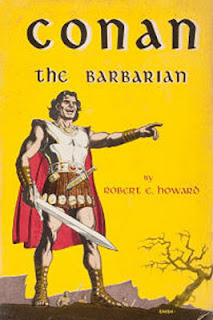by Carlie M A Cullen
In the first post of this two-part series, we looked at the origins of the fantasy genre. In this final article, we take the next step to see what made it the powerhouse it is today.
The arrival of magazines devoted to fantasy fiction played an important part in the development of the genre. The first English language one, Weird Tales, was created in 1923, and many others soon followed. These were instrumental in bringing fantasy fiction to a much wider audience in the UK and USA and also played a huge role in the rise of science fiction; it was about this time the two genres became associated with each other.
Many of the genre’s most prominent authors began their careers in these types of magazines, including H P Lovecraft, Fritz Leiber and Ray Bradbury.
Also around this time, several authors were beginning to push the boundaries of fantasy by incorporating humorous and satirical elements. One such novel, Jurgen by American author, James Branch Cabell, even became the subject of an unsuccessful prosecution for obscenity.
In the aftermath of WW1, British authors began publishing a large number of fantasy books aimed at an adult audience. Within the next decade, literary critics began to take more notice of fantasy as a genre and began to argue that it was worthy of consideration and unjustly considered suitable only for children.
By the 1950’s, sword and sorcery was reaching a much wider audience. Robert E Howard’s Conan the Barbarian is considered to have played a defining role in this subgenre with the vivid, larger-than-life action and adventure.
It was the advent of high fantasy and the popularity of Tolkien’s The Hobbit and The Lord of the Rings which finally catapulted the fantasy genre into the mainstream. These works unquestionably created ‘fantasy’ as a marketing category and they submerged all the works of fantasy written previously. One cannot overstate the impact Tolkien’s work had on the genre, and his books combined with several other successful series (C. S. Lewis’s Chronicles of Narnia, Mervyn Peake’s Gormenghast, and Ursula K. Le Guin’s Earthsea), helped cement the genre’s popularity and paved the way for fantasy literature as we know it today.
Publishers began to search for new fantasy material, but it wasn’t until the 1977 release of The Sword of Shannara, they found the breakthrough success they’d been praying for. Terry Brook’s novel was the first fantasy book to top the New York Times bestseller list. As a result, the genre saw an explosion of titles being published in subsequent years.
In the 1970’s and 1980’s, some works were notable for their departure from Tolkien’s idea of fantasy; Stephen R. Donaldson’s Lord, Foul’s Bane, Robert Holdstock’s Mythago Wood, and Glen Cook’s Black Company series, were a few of these.
The 1990’s saw the publication of Robert Jordan’s Wheel of Time series, Tad Williams’s Memory, Sorrow and Thorn, and George R. R. Martin’s A Game of Thrones. Interestingly, A Game of Thrones is considered ground-breaking for a new and different type of fantasy work, one which is more gritty and violent and less idealistic.
Fantasy’s niche market status has changed in recent years; owing greatly to J K Rowling’s Harry Potter books becoming the bestselling series of all time, fantasy is becoming more interwoven with mainstream fiction. In addition, the film adaptations of these and other fantasy novels, (Lord of the Rings, The Lion, the Witch and the Wardrobe), has enhanced this status further.
Now in 2013, fantasy is a multi-layered instrument encompassing many sub-genres and its popularity shows no sign of waning.
------------------
Carlie M A Cullen is the author of the novel Heart Search, blogger extraordinaire and loyal friend to many -both human and mythical.




No comments:
Post a Comment